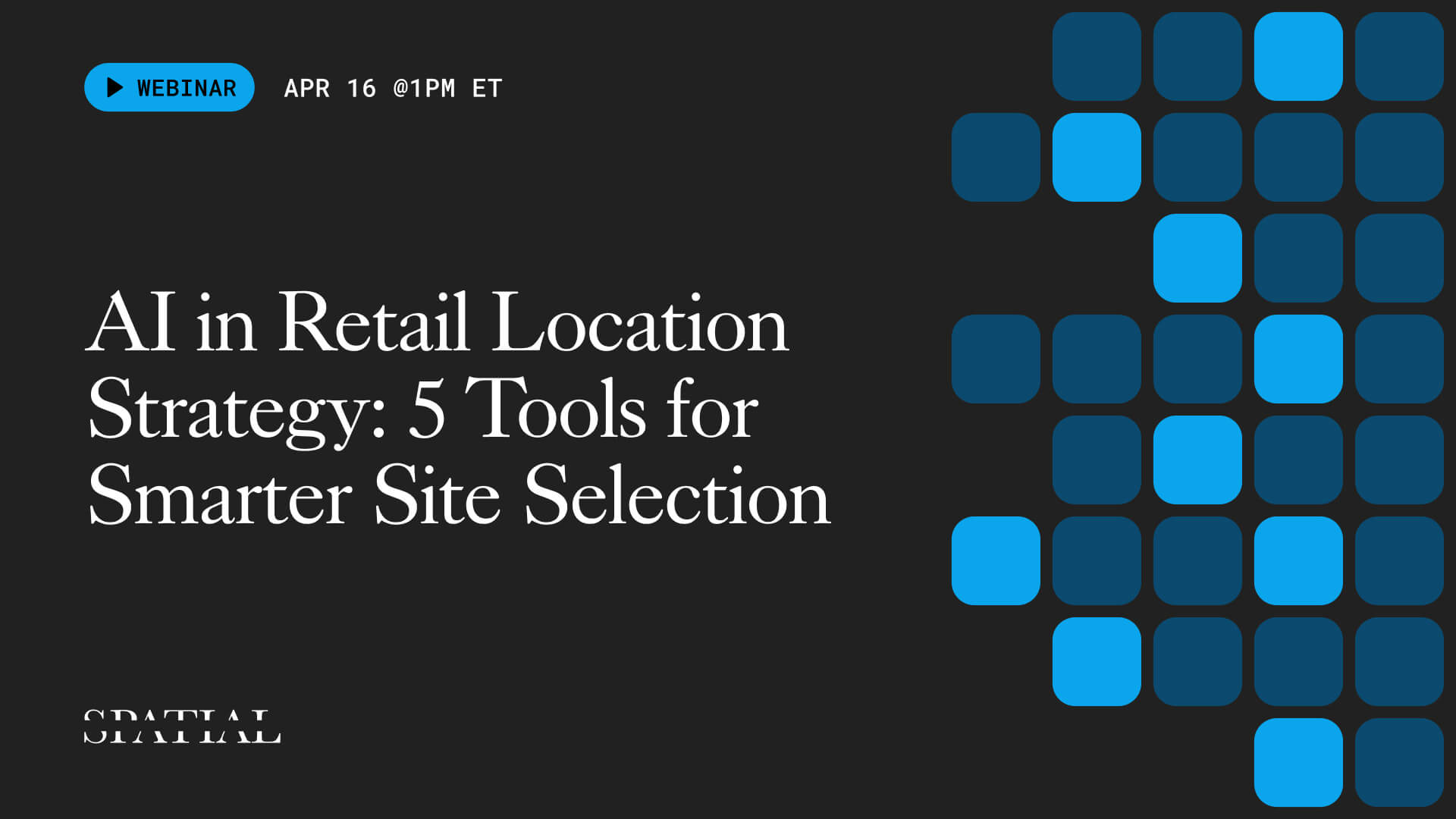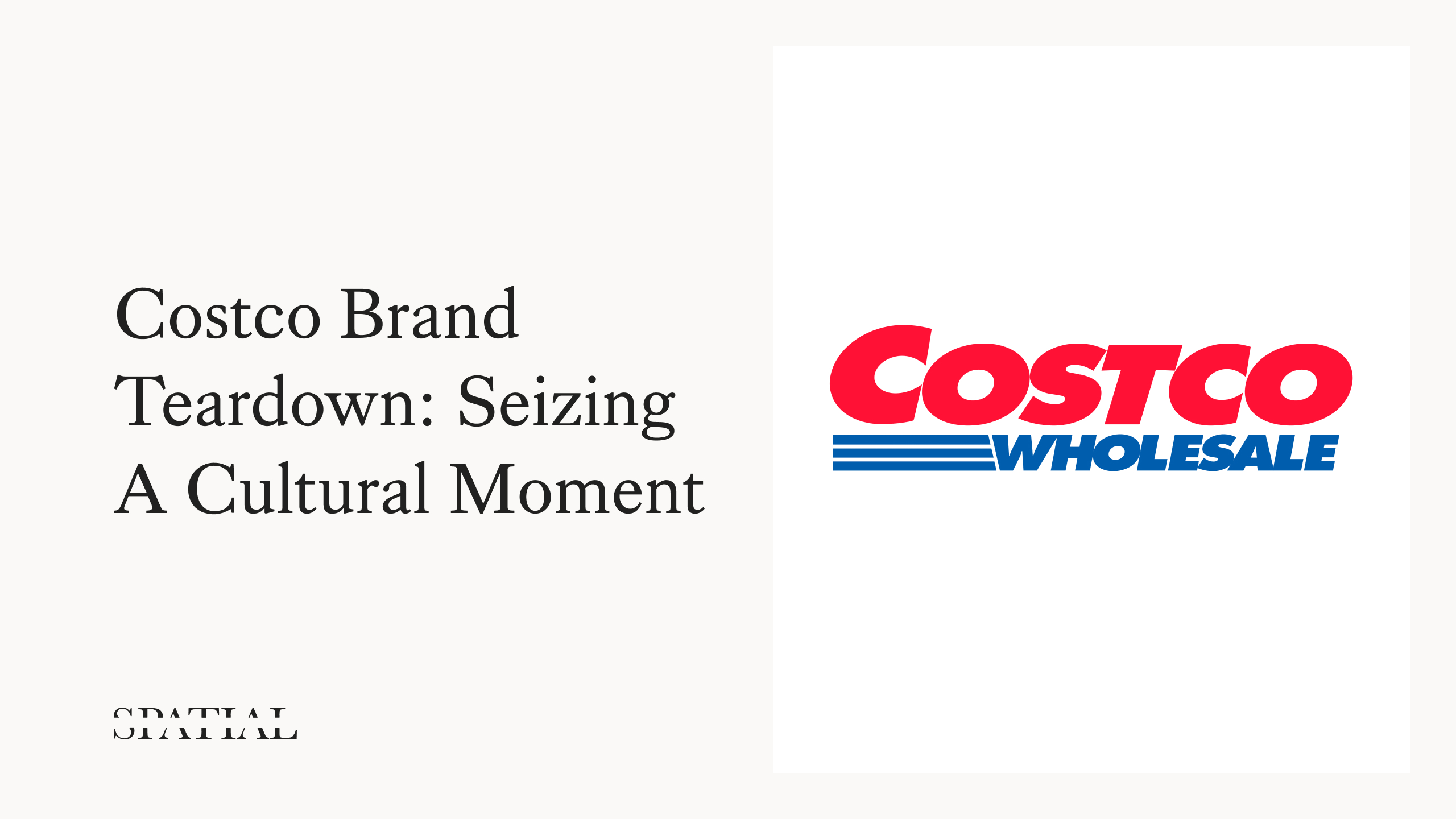Part 4: Acquisitions
Welcome to part four of a five-part series showing how CRE professionals and analysts can append social segments to foot traffic data, analyze customer segments visiting a location, and activate marketing campaigns to drive the ideal customer to the center.
- Part 1: Retailing A Location
- Part 2: Tenant Representation
- Part 3: Marketing Activation
- Part 4: Acquiring New Locations
- Part 5: Operations: Design, Amenities, Events
Market and submarket site selection is a critical factor driving real estate return. Developing a thesis is complex; pop growth, supply, demand, and policy all must be weighed. Yet the interests and motivations of people are undervalued for one reason - historically, they were unmeasurable.
Spatial.ai reveals the types of people and behavior driving up asset prices.
.png)
The Challenge
Why would real estate value appreciate outside of direct investment? Many market forces could trigger appreciation: pop growth, favorable policy, supply & demand. Yet one factor rarely discussed is the attractiveness of the market to people. That is because it is hard to measure the vibe of a neighborhood and the evolving motivations of people living and visiting.
Spatial.ai reveals the types of people and behavior driving up the value of assets. This blog will show how to take a social snapshot of an area before its value inflection point. And use that thumbprint as a component in locating markets & submarkets before they take off.
Case Study: Over The Rhine, Cincinnati
There are three steps to using the PersonaLive dataset and Geosocial Proximity dataset to understand the people and behaviors driving high-performing assets.
- Choose An Asset
- Take A Snapshot
- Use The Thumbprint
Step 1: Choose An Asset
Start with an asset you would like to replicate. It could be a neighborhood that has appreciated dramatically or even one of your own assets. For this analysis, I will use the Over The Rhine (OTR) neighborhood in Cincinnati. One-bedroom rents have nearly doubled since 2015.

Step 2: Take A Snapshot
We need a snapshot of what this area was like before hitting its inflection point. Let’s look at the people and behaviors that played a part in driving up rents measured by two datasets:
- The people visiting and living in the area before inflection (PersonaLive)
- The behaviors & activities present before inflection (Geosocial Proximity)
To capture the change in people living and visiting Over The Rhine we draw a polygon around the area in the Append > Draw Polygon tool. We will want to do this before the inflection point (2015) and compare it with today (2022).

PersonaLive People Thumbprint
By navigating to Analyze > Mobile Insights we can compare visitors and residents of OTR in 2015 to 2022.

In 2015 this area was dominated by rising professionals, followed by #RustRenters and #HistoricTransitions— lower-income segments. In 2022 visitation share from rising professionals decreased and higher-income segments like #SuburbChic appeared, marking a transition. Segments present before the inflection point (2015) will be our PersonaLive People Thumbprint.
Geosocial Behaviors Thumbprint
Let’s take a snapshot of the behaviors present during the inflection. We can do this with the Geosocial Proximity dataset that measures geotagged posts in census block groups. The furthest vintage of the Geosocial dataset is 2016 - 2018, covering 24 months of posts.

Geosocial Proximity reveals craft alcohol (Hops & Brews, Wine Lovers, Whiskey Business), Girls Night Out (Girl Squad), and Live Music contribute to the unique vibe that makes OTR attractive.
Step 3: Use The Thumbprint
Now we can use the thumbprints to identify the Markets and Submarkets that most closely match our Over The Rhine asset. We will use the PersonaLive thumbprint for Market selection, and combine the two for submarket selection.
Market Level Thumbprint
First, we rank 15 potential markets by the percentage of households in our five 2015 OTR segments. We also include pop growth.

Using our criteria, Raleigh ranks #1, followed by Nashville and Columbus.
Submarket Analysis
Let’s dive into Raleigh to choose submarkets with a similar vibe and high growth rate. We will take a side-by-side look at the people and behavior thumbprint and then combine them to rank Raleigh neighborhoods.

Finally, we narrow down to neighborhoods that meet these three criteria:
- 75% of the population must be one of our 5 OTR segments (PersonaLive thumbprint)
- 75 percentile minimum average match for OTR 2017 social behavior (Social thumbprint)
- 2.5% minimum expected growth rate

These three criteria narrowed precisely to four neighborhoods that range in average rental price from $900 - $1,500. An excellent opportunity to get a jump on areas with all the ingredients of OTR before the inflection point.
Conclusion
There is a lot that goes into acquisitions. What Personalive and Geosocial Proximity capture for the first time is the people component of what makes an asset appreciate. But you still have to operate assets effectively to capture that value. How can you use your knowledge of people and behaviors near an asset to design the building, choose amenities and run events?
That is what we will discuss in Part 5.
Take your CRE strategy to the next level
Join us for a live webinar, where you'll learn how to:
- Differentiate demographically similar properties using behavioral segmentation data
- Identify the ideal tenants for any vacancy
- Close deals faster by presenting tenants with real-time consumer segmentation data

What you should do now
Whenever you're ready, here are 3 ways Spatial.ai can help:
- See PersonaLive In Action. If you'd like to segment and target your best customers using real-time behavioral data, schedule a free 30-min demo to get started.
- Subscribe To Consumer Code. If you've found this helpful, check out our newsletter and podcast where we share more consumer research and insights for retail marketers.
- Share This Post. If you know another marketer who’d enjoy reading this post, share it with them on Linkedin, X, or Facebook.
Get retail marketing tips
We email every monday with smart growth strategy ideas. Almost no promotion. Just value.

.avif)
%20(1).jpg)







